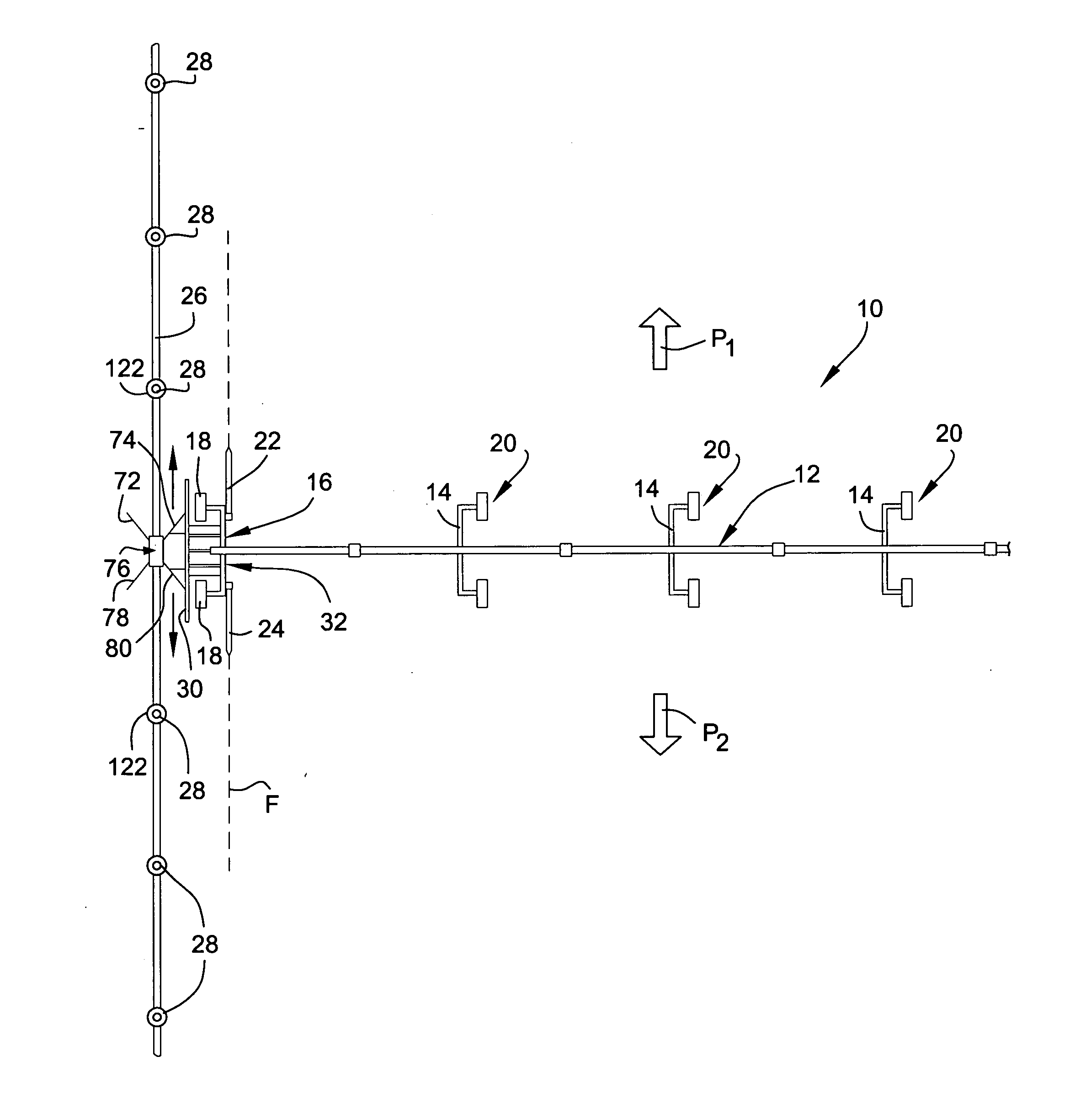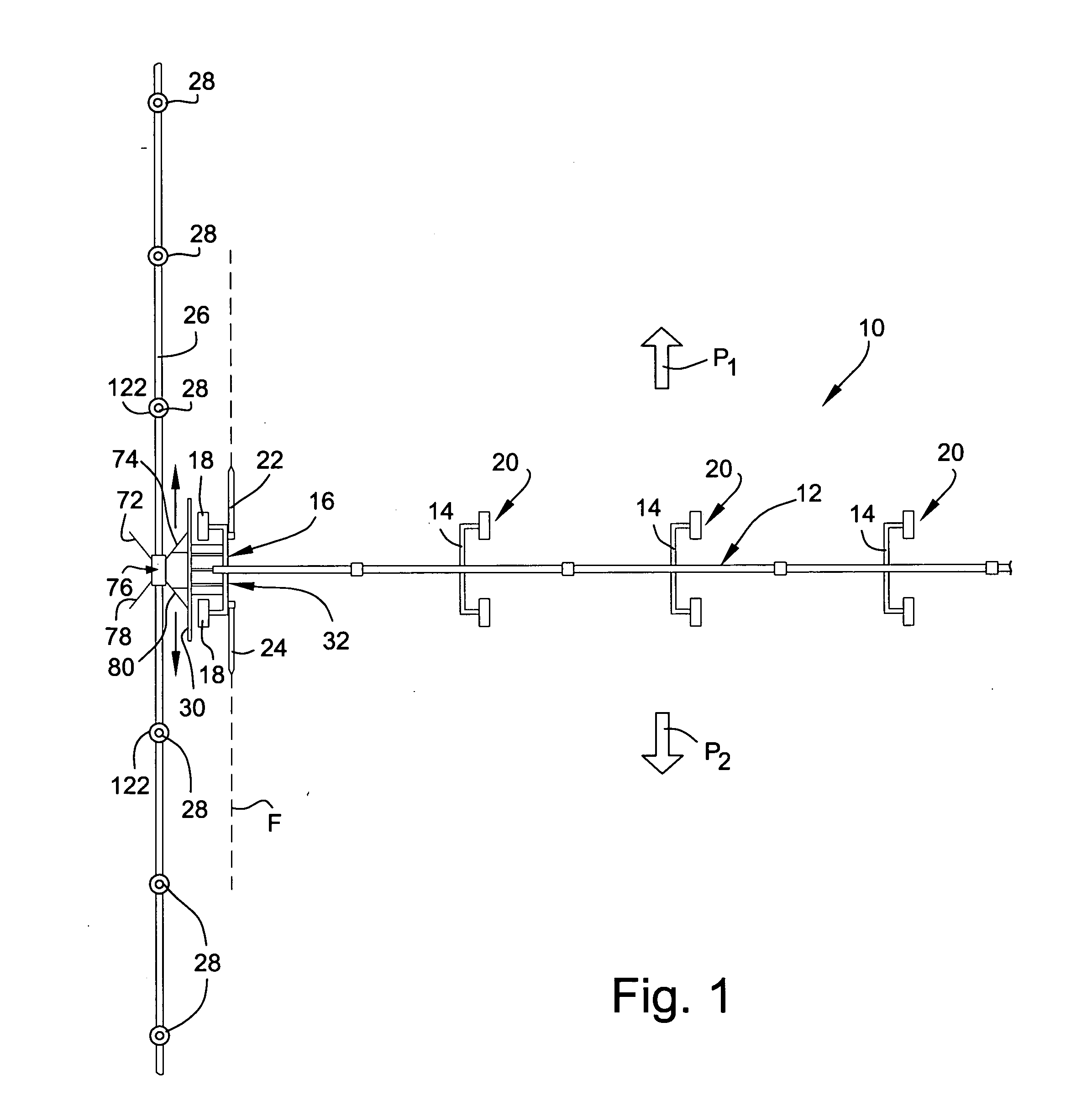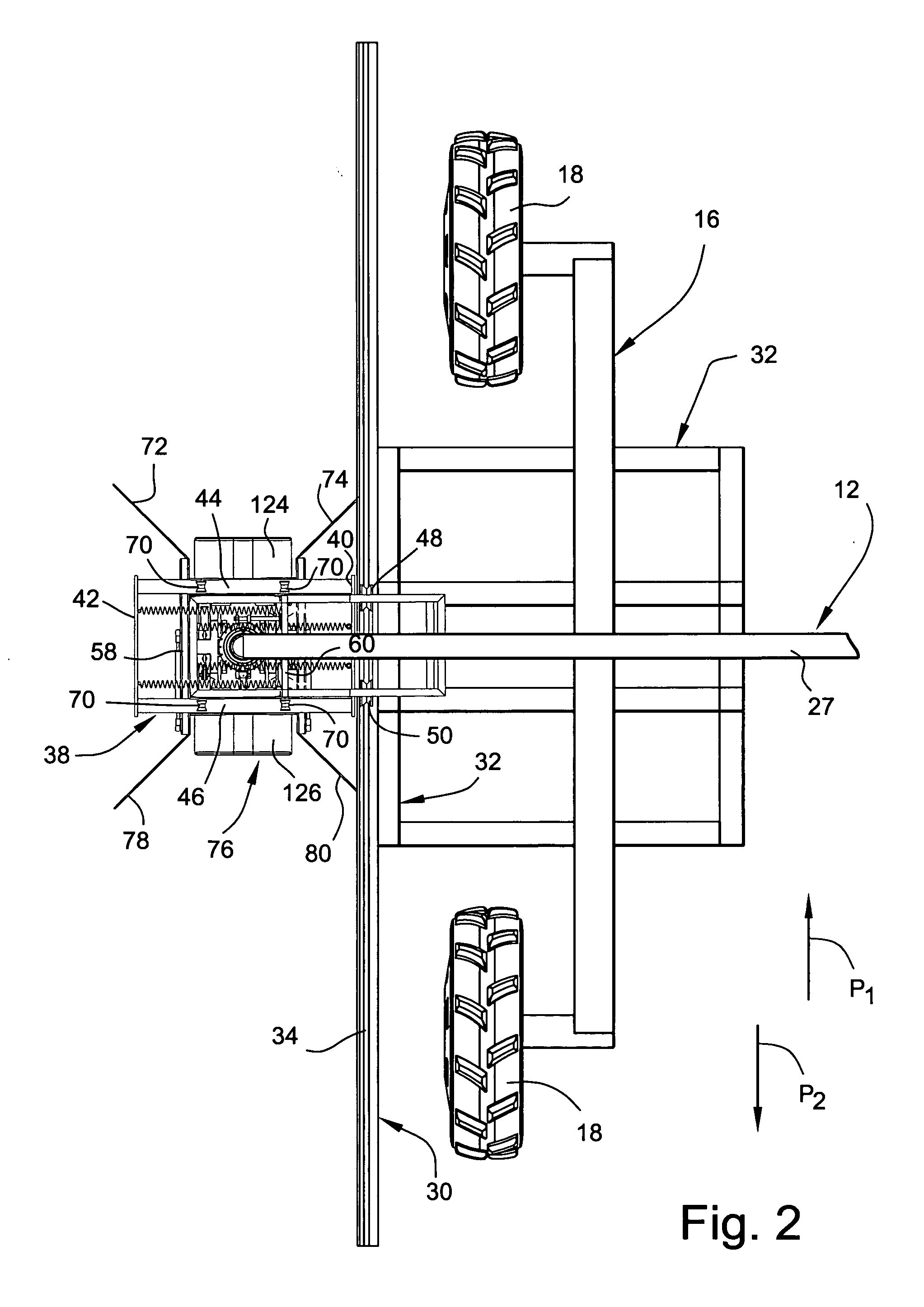Linear-feed irrigation apparatus and related method
a technology of linear movement and irrigation apparatus, which is applied in the field of linear movement irrigation apparatus, can solve the problems of clogging the sprinkler nozzle, affecting the flow rate of water, so as to reduce the load placed on the hydrant, reduce the load, and effectively capture the hydrant
- Summary
- Abstract
- Description
- Claims
- Application Information
AI Technical Summary
Benefits of technology
Problems solved by technology
Method used
Image
Examples
Embodiment Construction
[0058] With reference initially to FIG. 1, a typical linear-move irrigation machine 10 includes a main truss assembly 12 supported by several wheeled towers 14 for movement in a forward direction along a linear path P1, or in a rearward direction along an opposite path P2. These paths extend perpendicularly to the truss assembly 12, and parallel to a water supply pipe 26. A drive tower 16 typically supports a generator (not shown) for supplying power to the drive wheels 18. In an end-feed arrangement, the drive tower is located at one end of the field, and the supply pipe 26 runs along that end of the field. In a center-feed machine, the drive tower is typically located in the center of the field and the supply pipe also runs through the center of the field. Separate electric motors (also not shown) are often attached to the remaining towers 14 for driving the respective wheel pairs 20 as needed to maintain alignment with the end tower 16 and associated drive wheels 18. Other drive ...
PUM
 Login to View More
Login to View More Abstract
Description
Claims
Application Information
 Login to View More
Login to View More - R&D Engineer
- R&D Manager
- IP Professional
- Industry Leading Data Capabilities
- Powerful AI technology
- Patent DNA Extraction
Browse by: Latest US Patents, China's latest patents, Technical Efficacy Thesaurus, Application Domain, Technology Topic, Popular Technical Reports.
© 2024 PatSnap. All rights reserved.Legal|Privacy policy|Modern Slavery Act Transparency Statement|Sitemap|About US| Contact US: help@patsnap.com










